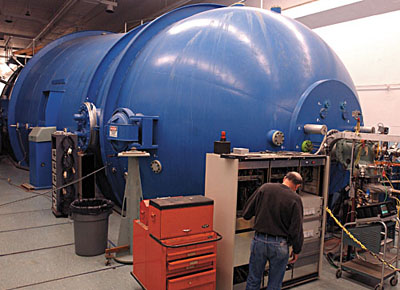Directed by physics professor Richard Casten, Yale's Wright Nuclear Structure Laboratory houses the world's most powerful stand-alone Tandem Van de Graaf accelerator, a type of device that speeds up charged particles.
The accelerator -- which is located in a facility shielded by 10-foot-thick walls of earth -- is used in two of the three research programs at the laboratory: the nuclear structure program, which studies how protons and neutrons interact with each other inside the nucleus and the shapes and motions that nuclei can exhibit; and the nuclear astrophysics program, which looks at how collisions in nuclei in stars are able to generate energy, heat and light.
The third program of study at the lab is research with relativistic heavy ions. This program uses RHIC, the accelerator at Brookhaven National Lab, and looks at collisions of nuclei together at very high energies. The goal of this research is to study the structure of protons and neutrons and the interactions that make up matter at the most microscopic level.
Contents
Building for State-of-the-Art Research
Inspiring Future Science Leaders
Harnessing the Power of the Genome
Encouraging Women in the Sciences
Forging International Collaborations
Yale Dean Honored With Blue Planet Prize
Engineering the World of Tomorrow
Yale Engineer Receives National Medal of Technology
Promoting the Greening of 'The Blue'
Peabody Museum of Natural History:
Preserving the Past, Educating Future Generations
Bringing Yale Discoveries to The Public
Wright Nuclear Structure Laboratory: Probing the Power of Particles
More Yale Science News
Facilities Far and Near

 SPECIAL
SPECIAL ISSUE
ISSUE 2002-2003
2002-2003 |
| VOLUME 2, NUMBER 1
VOLUME 2, NUMBER 1
